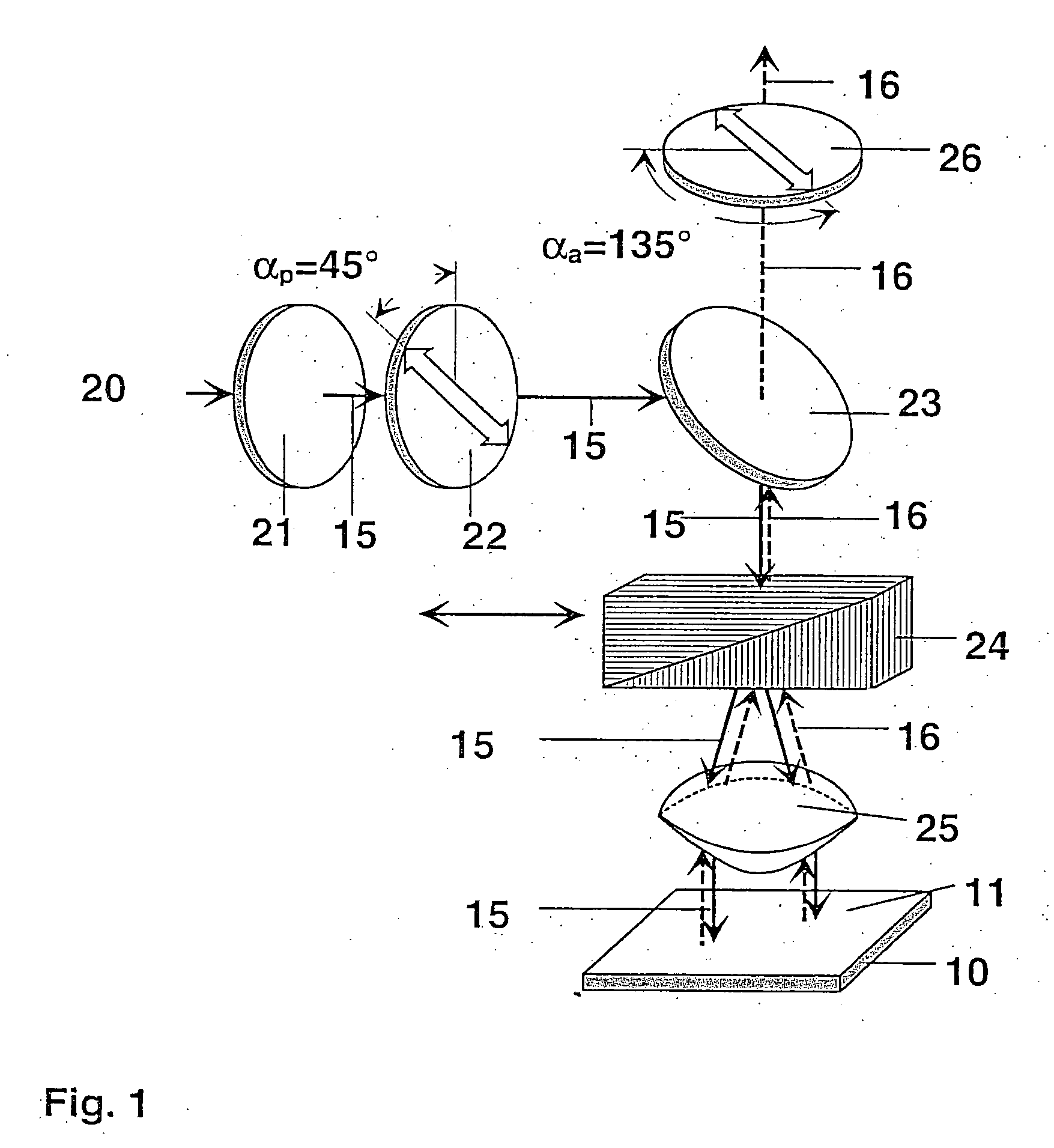Microscope and method of measurement of a surface topography
a microscope and topography technology, applied in the field of microscopes and methods of surface topography measurement, can solve the problems of high vibration sensitivity of the measurement device, inability to examine the topography of the surface, and inconvenient use of normal incident light techniques (bright field, dark field) to achieve the effect of less vibration sensitivity and higher measurement precision
- Summary
- Abstract
- Description
- Claims
- Application Information
AI Technical Summary
Benefits of technology
Problems solved by technology
Method used
Image
Examples
Embodiment Construction
[0032]FIG. 1 schematically shows the setup of a microscope according to the invention. The overall structure of the microscope is similar to a Nomarski setup. A work piece 10 or the topography of the surface 11 of this work piece 10 is to be examined. The optical path is reproduced by initially incident light 15 and then light 16 reflected by the surface 11 of the work piece 10.
[0033] The starting point is a light source 20, which in the present embodiment is a white light source. The light preferably falls through a spectral filter 21 with a narrow frequency spectrum. The light of this frequency spectrum then strikes a polariser 22 and is linearly polarised there. The light then passes to a partially transparent, in this case semi-transparent, mirror 23, which is directed into the optical path in such a manner that it deflects the incident light from the light source 20 in the direction of the surface 11 of the work piece 10, in the present embodiment. The work piece is frequently...
PUM
 Login to View More
Login to View More Abstract
Description
Claims
Application Information
 Login to View More
Login to View More - R&D
- Intellectual Property
- Life Sciences
- Materials
- Tech Scout
- Unparalleled Data Quality
- Higher Quality Content
- 60% Fewer Hallucinations
Browse by: Latest US Patents, China's latest patents, Technical Efficacy Thesaurus, Application Domain, Technology Topic, Popular Technical Reports.
© 2025 PatSnap. All rights reserved.Legal|Privacy policy|Modern Slavery Act Transparency Statement|Sitemap|About US| Contact US: help@patsnap.com



